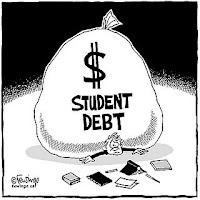Whispered Policies

Friday's Chronicle reports on a new study that points out how difficult it can be to identify which colleges and universities have no-loans policies designed to enhance affordability. Author Laura Perna and her colleagues find that the majority of elite institutions with these policies fail to advertise them in ways that are accessible to low-income students and families-- effectively maintaining their status as "bastions of privilege." The researchers then go on to make several helpful suggestions about how colleges could change their tactics to increase awareness and uptake of their progressive efforts. But they could've gone one step further and discussed the incentives colleges have to maintain the status quo-- that is, to continue making their current and former students and staff feel good with liberal actions, garnering attention in elite venues such as the New York Times , without fundamentally changing their overall enrollment demographics or costing too mu







